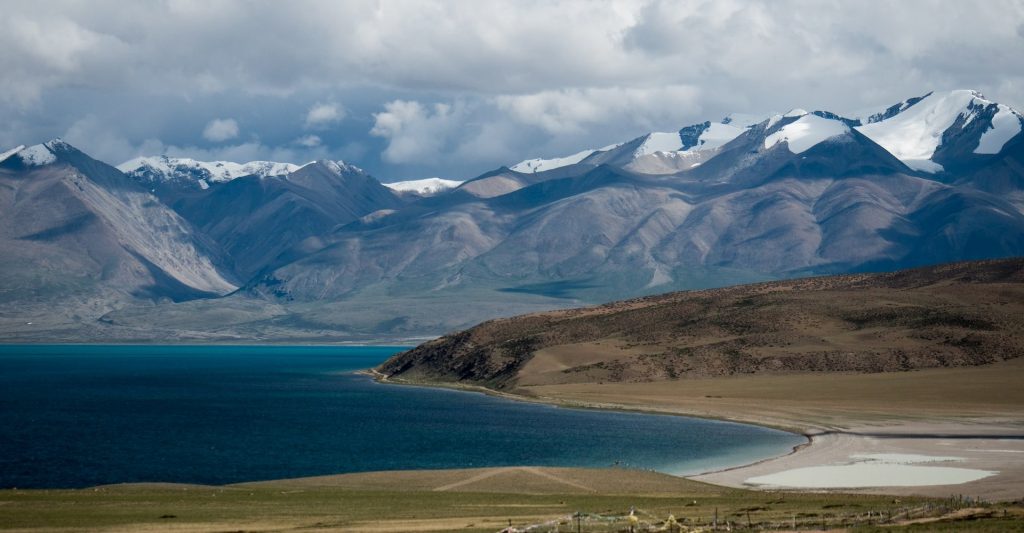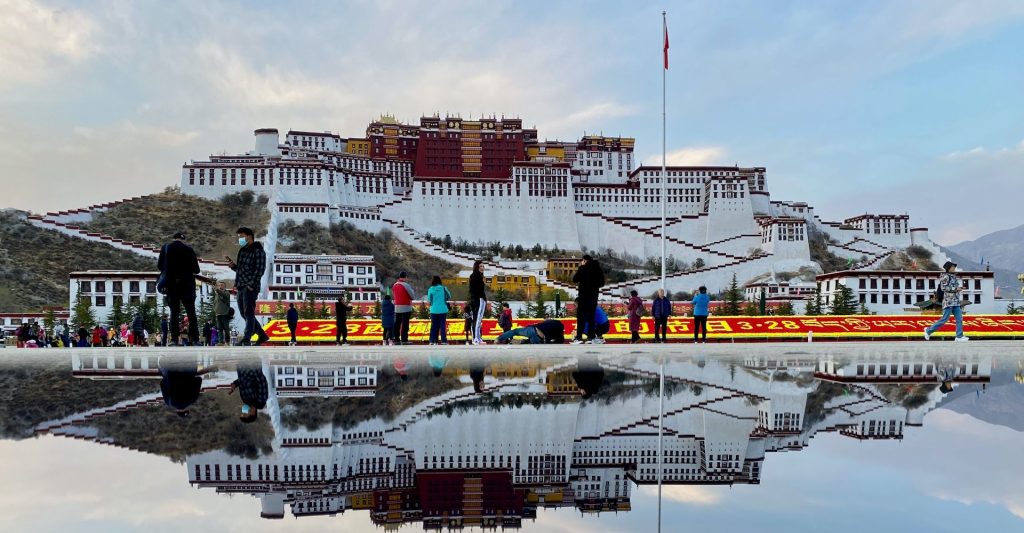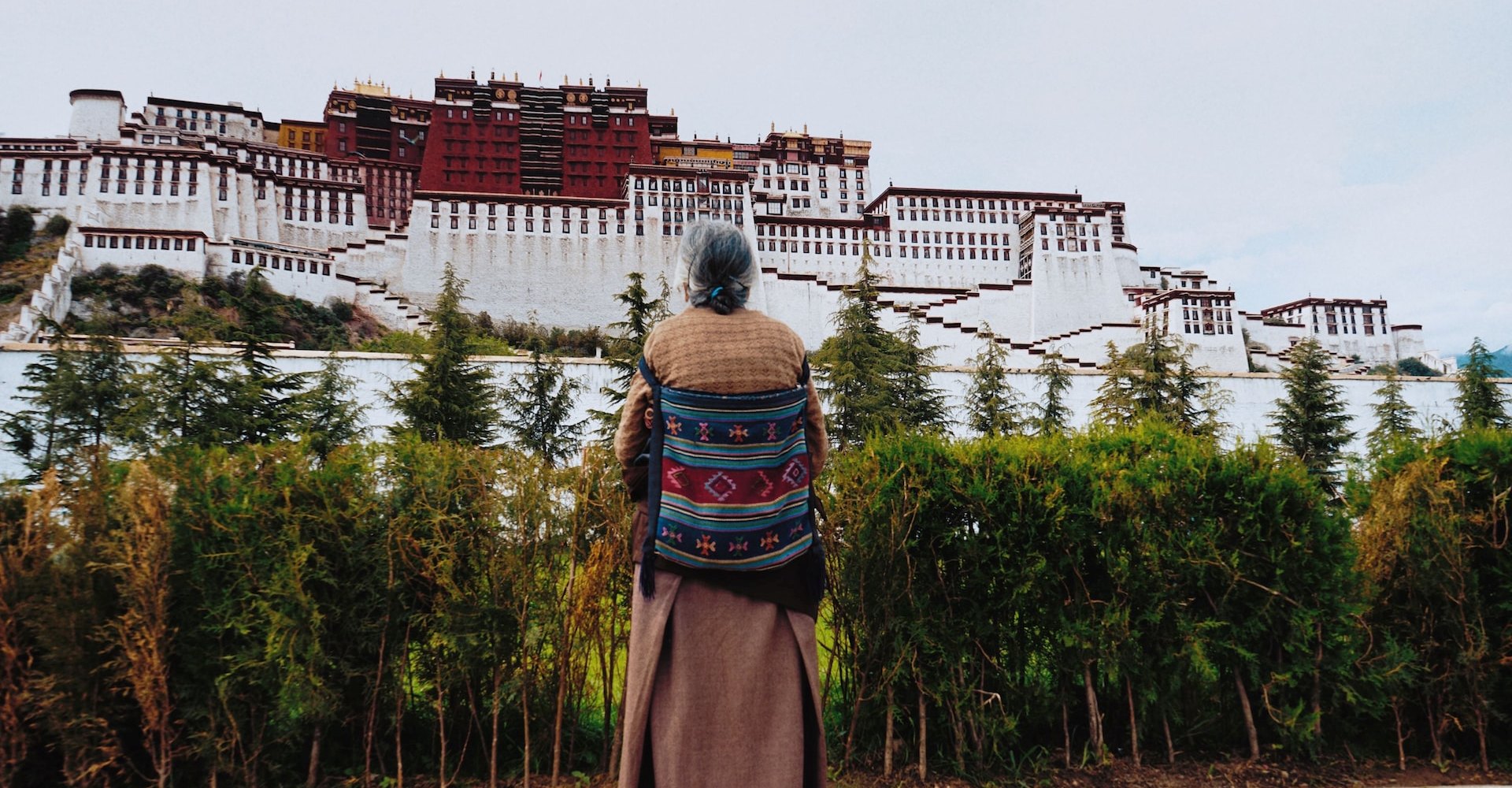Your Ultimate Tibet Travel from Nepal gives you a depth insight into the fascinating and unique region and its history, culture, and natural beauty.

Where is Tibet?
Tibet is an autonomous region located in the western part of China, with a total area of approximately 1.2 million square kilometers (471,700 square miles). It is situated on the Tibetan Plateau, which is sometimes referred to as the “Roof of the World” due to its high altitude. Tibet shares borders with several other countries, including Nepal, India, Bhutan, and Myanmar. Lhasa is the capital city of the Tibetan Autonomous Region and is located in the southeastern part of Tibet.
“If you want to be happy for a lifetime, be a gardener.” This proverb speaks to the importance of hard work and self-sufficiency, which are values that are highly valued in Tibetan culture.
Detail information about Tibet
Here are some details about Tibet:
- Geography: Tibet is situated on the Tibetan Plateau, which is the highest and largest plateau in the world. It has an average elevation of over 4,500 meters (14,800 feet) above sea level and is surrounded by towering mountains. The region is home to many rivers, including the Brahmaputra and the Yangtze.
- Climate: Tibet has a dry and harsh climate, with low temperatures and high altitudes. Summers are short and cool, while winters are long and very cold. The region receives little rainfall, and much of it falls as snow.
- Culture: Tibet has a rich cultural heritage that is deeply influenced by Buddhism. Tibetan Buddhism is a unique form of Buddhism that incorporates elements of Bon, the indigenous religion of Tibet. The region is also known for its traditional arts and crafts, such as thangka painting, carpet weaving, and metalwork.
- History: Tibet has a long and complex history that dates back to the 7th century. The region was ruled by a series of kings and religious leaders, and it was incorporated into the Chinese empire in the 18th century. Tibet was declared an autonomous region of China in 1965, but there has been ongoing political and cultural tension between the Tibetan people and the Chinese government.
- Tourist attractions: Tibet is a popular tourist destination, attracting visitors from around the world who are interested in its history, culture, and natural beauty. Some of the top attractions include the Potala Palace in Lhasa, Mount Everest, the Jokhang Temple, Namtso Lake, and the Tashilhunpo Monastery.
Tibet is a fascinating and unique region with much to offer visitors who are interested in its history, culture, and natural beauty. However, it is important to be aware of the restrictions and regulations in place for foreign visitors and to respect the local culture and traditions.


Here are some of the major attractions that draw tourists to Tibet:
Potala Palace: This iconic palace is located in Lhasa and was the residence of the Dalai Lama until the 14th Dalai Lama fled to India during the 1959 Tibetan uprising. Today, it is a UNESCO World Heritage Site and a major tourist attraction.
Mount Everest: The world’s highest peak is located on the border between Tibet and Nepal, and visitors can view it from the north base camp in Tibet.
Jokhang Temple: This is one of the most important religious sites in Tibet and is located in the heart of Lhasa. It is a UNESCO World Heritage Site and a pilgrimage destination for Tibetan Buddhists.
Namtso Lake: This stunning lake is located in northern Tibet and is the second-largest saltwater lake in China. Visitors can enjoy its crystal-clear waters and stunning views of the surrounding mountains.
Yamdrok Lake: This is another beautiful lake in Tibet, located about 100 kilometers southwest of Lhasa. It is known for its turquoise waters and stunning mountain scenery.
Tashilhunpo Monastery: Located in the city of Shigatse, this is one of the largest and most important monasteries in Tibet. It is the traditional seat of the Panchen Lama, the second-highest-ranking lama in Tibetan Buddhism.
Kailash Mansarovar: This is a sacred site for Hindus, Buddhists, and Jains, located in western Tibet. It is believed to be the abode of Lord Shiva, and pilgrims come from all over the world to perform the Kailash Parikrama, the circumambulation of the mountain.
Tibet is a fascinating destination for tourists who are interested in history, culture, and natural beauty. Its unique blend of religion, tradition, and stunning landscapes makes it a must-visit destination for many travelers.
What are the major touristic links between Nepal and Tibet?
There are several major tourist links between Nepal and Tibet, as the two regions share a long history and cultural heritage. Here are some of the main connections:
- Overland Tours: One of the most popular ways to travel between Nepal and Tibet is by overland tour. This typically involves traveling from Kathmandu, the capital of Nepal, to Lhasa, the capital of Tibet, via the Friendship Highway. This journey takes visitors through some of the most stunning landscapes in the world, including the Himalayan mountain range and the Tibetan Plateau.
- Mount Everest: Mount Everest, the tallest mountain in the world, straddles the border between Nepal and Tibet. Many visitors to both regions are interested in seeing Mount Everest up close, either by trekking to its base camp on the Nepalese side or by taking a scenic flight over the mountain.
- Buddhist Culture: Both Nepal and Tibet are deeply influenced by Buddhism, and visitors to both regions are often interested in exploring the rich religious and cultural heritage of these areas. Nepal is home to many important Buddhist sites, such as the Boudhanath Stupa and the Swayambhunath Temple, while Tibet is known for its many monasteries and temples, including the Potala Palace and the Jokhang Temple.
- Trekking and Hiking: Both Nepal and Tibet offer some of the best trekking and hiking opportunities in the world. Nepal is famous for its trekking routes in the Himalayas, such as the Annapurna Circuit and the Everest Base Camp trek. Tibet is home to some of the most remote and untouched landscapes on the planet, and visitors can enjoy trekking and hiking in places like Mount Kailash and Namtso Lake.
The connections between Nepal and Tibet are diverse and rich, and visitors to both regions can enjoy a wide range of cultural, natural, and historical attractions.
What is the best itinerary to visit Tibet from Nepal?
There are several popular itineraries for visiting Tibet from Nepal, depending on your interests and the amount of time you have available. Here is a suggested itinerary for a 10-day trip:
Day 1: Arrive in Kathmandu, Nepal. Spend the day exploring the city and getting acclimated to the altitude.
Day 2: Take a scenic flight from Kathmandu to Lhasa, Tibet. Spend the day relaxing and getting used to the high altitude.
Day 3-4: Explore Lhasa, including the Potala Palace, the Jokhang Temple, and Barkhor Street. Learn about Tibetan Buddhism and the unique cultural heritage of the region.
Day 5: Drive to Gyantse, a historic town in southern Tibet. En route, stop at the Yamdrok Lake and visit the Kumbum Stupa.
Day 6: Visit the Pelkor Chode Monastery in Gyantse, which is famous for its large stupa and impressive murals.
Day 7: Drive to Shigatse, the second-largest city in Tibet. Visit the Tashilhunpo Monastery, the traditional seat of the Panchen Lama.
Day 8: Drive to Everest Base Camp, which offers stunning views of Mount Everest. Spend the night at a local guesthouse and enjoy the clear night skies.
Day 9: Return to Shigatse and visit the local market and historic sites.
Day 10: Return to Lhasa and catch a flight back to Kathmandu.
Tibet itinerary offers a comprehensive overview of some of the most popular attractions in Tibet, including cultural and historical sites, natural landscapes, and opportunities to learn about Tibetan Buddhism. It is important to note that this itinerary is subject to change depending on the season, local conditions, and government regulations, so be sure to check with a reputable tour operator for the latest information. Additionally, it is important to acclimate properly to the high altitude in Tibet, which can be challenging for some visitors.
Be sure to consult with a doctor before traveling to Tibet and take all necessary precautions to ensure your safety and comfort.
Is Tibet open to all Tourists?
Tibet is not open to all tourists, as there are restrictions and regulations in place for foreign visitors. In order to travel to Tibet, foreign visitors must obtain a Tibet Travel Permit, which can only be obtained through a registered travel agency in China. Additionally, foreign visitors must travel in a group with a licensed tour guide and are not allowed to travel independently in Tibet.
Furthermore, there are restrictions on the areas that foreign visitors can visit in Tibet, particularly those that are considered sensitive by the Chinese government. These areas include parts of Lhasa, the Tibetan Autonomous Region’s capital city, and certain monasteries and other sites with religious and cultural significance.
It is also worth noting that Tibet travel may be closed to foreign visitors during certain times of the year, particularly around major political events or sensitive anniversaries.
In summary, while it is possible for foreign visitors to travel to Tibet, there are restrictions and regulations in place that must be followed, and certain areas may be off-limits.
Who can visit Tibet as a tourist?
Tibet travel has many restrictions as Foreign tourists can visit Tibet, but some restrictions and regulations are in place. Here are some things you should know:
- You will need a special travel permit: All foreign visitors to Tibet must obtain a Tibet Travel Permit before they can enter the region. This permit is issued by the Tibet Tourism Bureau and can only be obtained through a registered travel agency in China.
- You must travel in a group: All foreign visitors to Tibet must travel in a group with a licensed tour guide. This is a requirement of the Tibet Travel Permit.
- You cannot travel independently: It is not possible for foreign visitors to travel independently in Tibet. You must book a tour through a registered travel agency in China.
- You may be subject to additional permits: Depending on where you want to visit in Tibet, you may need additional permits. For example, if you want to visit Mount Everest or other sensitive areas, you will need a special permit.
- You may be restricted during certain times: Tibet travel may be closed to foreign visitors during certain times of the year, particularly around major political events or sensitive anniversaries.
- You may need to be in good health: Most of the parts of your Tibet travel consist of high altitudes, and visitors may experience altitude sickness. Visitors should consult a doctor before traveling to Tibet and take appropriate precautions.
Our team of operations at Great Nepal Treks & Expedition has been handling Tibet travel packages since 1998. We have a very professional team who are very much used to operating several packages from Nepal to Tibet and making your Tibet Travel unforgettable. All Tibet Travel packages can be personalized as per your needs and desire.
